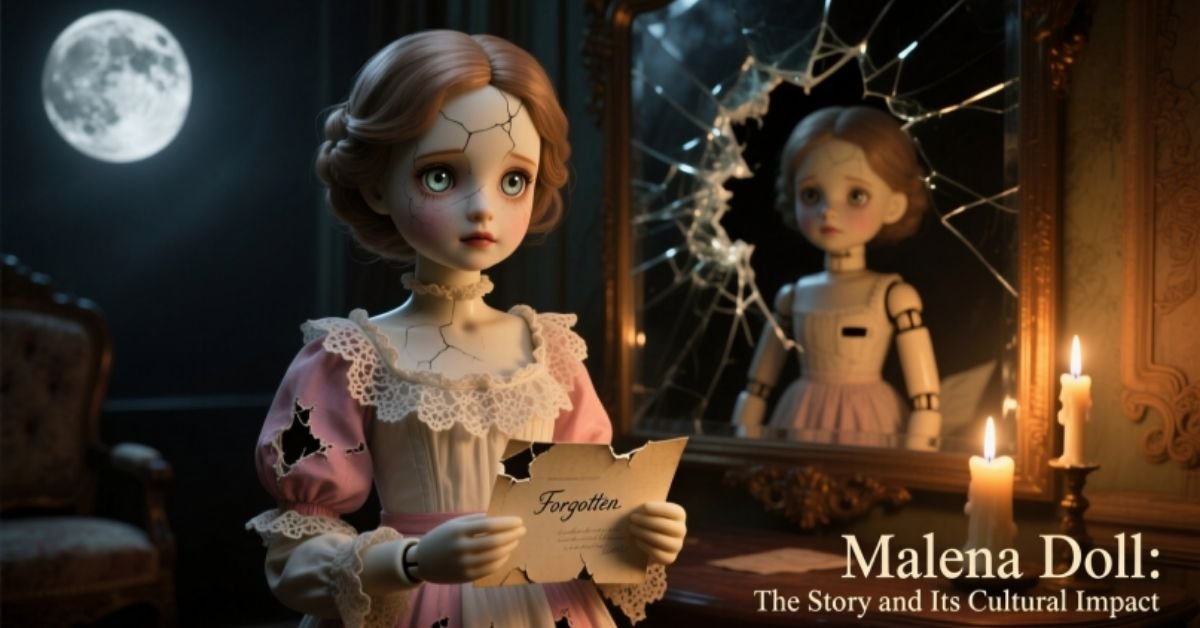ENTERTAINMENT
Game Changer Review: A Deep Dive Into the Hype and Reality

In the ever-evolving world of cinema, especially in the South Indian film industry, expectations often run high with action-packed blockbusters. One such film is the much-talked-about “Game Changer.” In this detailed game changer review, we unpack its story, cinematic strengths, weaknesses, characters, and the entertainment value it truly offers. Whether you’re a die-hard fan of Ram Charan or simply curious about the buzz, this in-depth breakdown will give you all the insights you need.
Game Changer Cast and Crew Information
Director:
Name | Role
S. Shankar | Director
Writers:
| Name | Role |
| Ranjeet Bahadur | Dialogue Writer |
| Sai Madhav Burra | Dialogue |
| Rajendra Sapre | Hindi Dialogue |
| S. Shankar | Writer |
| Karthik Subbaraj | Story By |
| Vivek | Writer |
Main Cast:
| Actor/Actress | Role |
| Ram Charan | Ram Nandan (as Ram Charan Teja) |
| Kiara Advani | Deepika |
| Sankalpa Banerjee | Senior Railway Officer |
| Anjali | Parvathy |
| S. J. Suryah | Bobbili Mopidevi |
| Meka Srikanth | Bobbili Sathyamurthy |
| Sunil (Suneel) | Side Sathyam |
| Jayaram | Bobbili Munimanikyam |
| Samuthirakani | Sabha |
| Brahmanandam | Kalyana Sundaram |
| Rajeev Kanakala | Mukundha |
| V.K. Naresh | Ram’s Adoptive Father |
| Naveen Chandra | Simha |
| Vennela Kishore | Eve Teaser |
| Achyuth Kumar | Professor K. P. |
| Subhalekha Sudhakar | Senior Party Worker |
| Prudhviraj | Mopidevi’s Assistant |
| Raghu Babu | Party Worker |
| Priyadarshi Pulikonda | Ram’s Friend |
| Satya | Ram’s Friend |
| Venkatesh Kakumanu | Ram’s Friend |
| Chaitanya Krishna | Ram’s Friend |
| Harsha Chemudu | Ram’s Friend |
| Rocket Raghava | – |
| Praveena | Ram’s Adoptive Mother |
| Racha Ravi | Local Goon |
| Kishore Kumar Polimera | Chinna Tammudu |
| Viswant Duddumpudi | Raghav |
| Ananya Sharma | Ram’s Adoptive Sister |
| Rohini | – |
| Gautam Raju | Traffic Police Constable |
| Ajay Ghosh | Biyyam Bhimarao |
| Krishnudu | Mall Malleshwarao |
Introduction to the Spectacle
“Game Changer” arrives with massive expectations. Starring Ram Charan in the lead role, the film boasts high-energy action scenes, powerful dialogues, and sleek visuals. The film begins with a tragic accident involving a broken road caused by corrupt practices. This sets the tone for a politically charged action drama.
The protagonist, Ram Nandan, portrayed by Ram Charan, is a fearless cop who fights injustice. But the question is: Does slow-motion action and visual flair alone create a great movie? Let’s find out in this expert game changer review.
Storyline Breakdown
The movie starts with a rainy night and a broken road leading to a tragic incident. The cinematography cleverly switches between past and present, showing glimpses of a woman and a child — raising curiosity but offering little depth.
Soon after, we meet Ram Nandan, a courageous police officer known for his witty one-liners and hard-hitting action. He is introduced as a savior in a corrupt political setup. The movie attempts to blend social commentary with commercial action. While it does hit a few right notes, it struggles to maintain coherence.
Characters and Performances
Ram Charan steals the show with his charismatic presence. His slow-motion walks, powerful punches, and dancing skills are impressive. However, his character lacks emotional depth. Supporting characters like Deepika (his love interest) and Side Satya (comic relief) fail to evolve beyond surface-level personalities.
- Deepika is shown as a moral compass who wants Ram to control his anger.
- Side Satya is supposed to add humor but ends up feeling forced and unnecessary.
- The main villain, Mopi Devi, is overly dramatic, resembling a local stage play antagonist rather than a threatening figure.
Direction and Screenplay
The film is directed with the intention of providing mass entertainment. However, it lacks nuance. Scenes appear disjointed, and transitions between comedy, action, and drama are abrupt. The screenplay tries to juggle too many elements—politics, romance, action, satire—but falls short in tying them together cohesively.
In one particularly odd scene, the protagonist gets stopped by traffic police, gets angry, and then starts dancing in the middle of the road. Text on the screen reads: “When angry, dance, eat less spicy food, and hit yourself with a rubber band.” While intended to be funny, it comes off as immature.
Game Changer Review: Pros and Cons Table
| Feature | Pros | Cons | Rating (Out of 5) | Importance |
| Visual Effects | Stunning slow-motion and CGI | Overused in many scenes | 4.0 | High |
| Storyline | Strong beginning with social message | Lack of coherence and depth | 2.5 | Very High |
| Acting | Ram Charan shines | Poorly written side characters | 3.5 | High |
| Music and Choreography | High-energy songs and stylish dance numbers | Lyrics and placement often feel random | 3.0 | Medium |
| Direction and Screenplay | Bold concept | Messy execution, tonal inconsistencies | 2.5 | Very High |
Thematic Elements: Love, Politics, and Humor
The movie touches upon various themes:
- Love: Ram’s romantic interest in Deepika is underdeveloped. She mainly appears as a decorative character.
- Politics: The narrative attempts to critique political corruption, but the delivery lacks depth and realism.
- Humor: Some jokes land well, while others, like the explanation for Side Satya’s sideways walking, are overly ridiculous.
Audience Experience
If you’re looking for brainless fun, loaded with action and bright visuals, then “Game Changer” may appeal to you. However, for viewers expecting intelligent storytelling, meaningful dialogue, or emotional engagement, it might disappoint.
The movie is loud, fast-paced, and doesn’t allow much time for reflection. For fans of mass cinema, this might not be a flaw—but for critical viewers, it certainly is.
Cinematography and Visuals
Visually, the movie is a treat. The use of color, camera angles, and slow-motion sequences is impressive. Action scenes are well-choreographed, though sometimes excessively stylized. The film shines during dance numbers and fight scenes, where technical brilliance overshadows narrative shortcomings.
Social Commentary and Satire
There are attempts to inject satire about social media obsession, corrupt bureaucracies, and public manipulation. However, these moments are brief and not deeply explored. The film raises good questions but fails to answer them convincingly.
Conclusion
In this Game Changer review, it’s evident that the film delivers on visual appeal, energetic action and Ram Charan’s powerful screen presence. The choreography, cinematography, and dramatic slow-motion sequences offer pure cinematic flair, making it a treat for fans who enjoy loud, fast-paced entertainment without needing to think too hard.
However, beneath the surface, the film stumbles with an unsteady script, shallow characters, and inconsistent tone. While it touches on serious issues like corruption and justice, the execution feels scattered and rushed. Game Changer entertains in bursts but fails to leave a lasting impact — more spectacle than substance.
Final Rating: 4/10
FAQs
What is the central message of “Game Changer”?
The film attempts to critique corruption and promote integrity, but the message gets lost due to poor storytelling.
Is “Game Changer” worth watching for the visuals alone?
Yes, if you enjoy stylish visuals, slow-motion sequences, and vibrant dance numbers.
Does the movie have a strong female character?
No, the female lead lacks depth and primarily serves as a romantic interest.
Is the humor in the movie effective?
Some jokes are funny, but many feel forced or childish.
How is Ram Charan’s performance?
Ram Charan delivers a strong physical performance but is limited by the script.
Can kids watch this movie?
Yes, although they may not understand the political elements, the action and comedy are suitable for younger audiences.
ENTERTAINMENT
Internet Equivalent of an R Rating: What It Means for Content

The internet has dramatically changed the way we consume media, allowing us to access an almost endless array of content at our fingertips. As more people engage with online platforms, the need for clear guidelines on what content is suitable for different age groups becomes essential. One concept that has emerged is the “internet equivalent of an R rating.” But what exactly does this mean, and how does it impact the way we interact with content on the web? In this article, we’ll dive into the concept of the “internet equivalent of an R rating,” explore its significance, and discuss how it plays a role in content moderation and age restrictions online.
The idea of an “R rating” is commonly associated with the film industry. In the United States, an R rating signifies that the content is restricted to viewers who are 17 years old or older due to the presence of explicit material, such as violence, language, or sexual content. However, when it comes to the internet, things aren’t always as straightforward. With the vast variety of content online—from social media platforms to streaming services, video games, and blogs—there is no official, universal rating system like the one used in films. This gap has led to the development of informal and community-driven systems that aim to warn users about potentially mature content.
The Internet Equivalent of an R Rating
The internet equivalent of an R rating refers to a content classification system used to label online material that may not be suitable for younger audiences. While there is no formal regulatory body like the Motion Picture Association (MPA) for the internet, many platforms, such as YouTube, Twitch, and Reddit, use self-imposed age restrictions and warnings to signal that certain content may be inappropriate for minors.
For instance, social media platforms often have settings where users can flag or label content as containing explicit language, violence, or other adult themes. This can be compared to the film industry’s R rating, which is intended to provide a level of control over who can access particular material. Similarly, online creators and platforms might give users the option to filter out mature content, restricting access based on age or user preferences.
Unlike the film industry, where the R rating is enforced by a recognized authority, the internet lacks a single governing body. Instead, platforms adopt their own set of rules for rating content. For example, YouTube uses the “Restricted Mode” setting to filter out content that may not be appropriate for younger viewers, while platforms like Netflix use parental controls and content warnings to signal age-appropriate material.
The Role of Content Moderation
Content moderation plays a significant role in regulating the internet equivalent of an R rating. As content creators and viewers continue to produce and consume a wide range of material, the responsibility to maintain a safe, age-appropriate online environment falls on both platforms and creators.
For instance, platforms like Facebook and Instagram often rely on community-driven reporting to flag inappropriate content. When flagged, these platforms review the content and decide whether it violates their guidelines, including those related to violence, hate speech, nudity, or explicit language. If the content is deemed inappropriate for all audiences, it may be removed or restricted, similar to how films with an R rating are only available to certain viewers.
User-Controlled Filters and Age Restrictions
Another aspect of the internet equivalent of an R rating is the ability for users to self-filter content based on their preferences or the platform’s age restrictions. Many social media and video platforms offer users the option to set age restrictions on the content they view. These filters can be based on content type (such as violence, language, or nudity) and can help ensure that individuals under a certain age do not encounter inappropriate material.
In addition, creators themselves can set their content to be accessible only to users of a certain age, which is often seen in gaming, streaming, or content creation communities. By marking videos or posts as restricted, creators can limit exposure to those who are most likely to engage with the material in a responsible way.
The Challenges of Online Content Classification
While the idea of an “internet equivalent of an R rating” might seem straightforward, there are significant challenges in applying it to the vast, diverse content that exists on the web. Unlike films, where the content is evaluated by a central body (like the MPAA), online platforms must navigate the complexities of content creation, freedom of expression, and diverse global cultural norms. What may be considered acceptable in one country or community may be deemed inappropriate in another.
Furthermore, the internet has a unique dynamic in which content is constantly evolving, and there is no universal standard for what qualifies as “mature.” Unlike movies or TV shows, where content is created and then reviewed by a rating body before release, online content is often uploaded by individual users, and moderation can happen after the fact. This creates a lag in enforcement and poses challenges in maintaining consistent content regulation.
The Impact on Creators and Audiences
For creators, understanding the “internet equivalent of an R rating” is important when it comes to reaching their target audience. By setting age restrictions or content warnings, creators can ensure that their material is appropriately consumed and doesn’t violate platform guidelines. This also allows them to make an informed decision about whether or not they want to include explicit content in their work, balancing artistic freedom with the responsibility to protect younger viewers.
For audiences, it is essential to be aware of the existence of these ratings and filters. Platforms like YouTube and Twitch, for example, may offer settings that allow users to limit exposure to certain types of content. This is especially important for parents who want to ensure that their children are not exposed to inappropriate material.
Conclusion
The concept of an “internet equivalent of an R rating” plays an important role in helping users navigate the vast and sometimes unpredictable world of online content. While the system is not as formalized as the movie industry’s R rating, platforms are making strides to provide content warnings, age restrictions, and user-controlled filters to ensure that online material is age-appropriate. By understanding these systems and taking advantage of the tools available, both creators and users can engage with the internet in a safer and more responsible way.
FAQs About the Internet Equivalent of an R Rating
-
What exactly is the internet equivalent of an R rating?
The internet equivalent of an R rating refers to content on digital platforms that may be restricted due to explicit material such as violence, sexual content, or strong language, similar to the film industry’s R rating. However, unlike films, these ratings are self-imposed and vary across different platforms. -
Are there official regulations for content ratings on the internet?
No, there is no official body regulating internet content ratings like the MPAA for films. Instead, platforms create their own rules for content classification and provide users with age restrictions or warnings about mature material. -
Can parents set age restrictions for their children’s internet usage?
Yes, many platforms allow parents to set age restrictions and content filters to prevent children from accessing inappropriate material. These tools help parents ensure their children are viewing age-appropriate content. -
How do platforms like YouTube handle mature content?
YouTube has a “Restricted Mode” setting that helps filter out potentially mature content, limiting its visibility for younger audiences. Content creators can also mark videos as “age-restricted,” ensuring that only adult users can access them. -
Why isn’t there a universal content rating system for the internet?
The internet’s vast and diverse nature makes it difficult to apply a single, standardized rating system. Content is constantly being created and shared by users from different cultures, which means what’s acceptable in one community may not be in another. This decentralized nature of the web complicates the idea of a universal rating system.
ENTERTAINMENT
Wife Pt2 – Malena Doll: The Story and Its Cultural Impact

In the world of digital storytelling, certain narratives capture attention not just for their drama, but for the deeper questions they raise about trust, identity, and human choices. One such title that has drawn curiosity is “Unfaithful Wife Pt2 – Malena Doll.” While it may sound like a sensational headline, this story—often shared through illustrated fiction, webcomics, or short-form drama content—uses its characters to explore complex emotional landscapes. This article offers a respectful, spoiler-aware overview of its themes, cultural context, and why stories like this continue to engage readers worldwide.
It’s important to note that Unfaithful Wife Pt2 – Malena Doll is a work of fiction, not a real-life account. Understanding it as creative storytelling helps frame its purpose: to provoke thought, not to promote judgment.
What Is “Unfaithful Wife Pt2 – Malena Doll”?
“Unfaithful Wife Pt2 – Malena Doll” is typically presented as a continuation of a dramatic narrative centered on a woman named Malena, often depicted as elegant, introspective, and caught in a web of emotional conflict. The “doll” reference in the title is symbolic—suggesting themes of control, appearance versus reality, or the pressure to conform to societal expectations in relationships.
The story unfolds through visual panels or written episodes, common in online fiction platforms. It delves into Malena’s internal struggles, her marriage, and the choices that lead her down a path of secrecy. Rather than glorifying infidelity, many interpretations use the plot to examine loneliness, miscommunication, and the consequences of unmet emotional needs.
Why Does This Story Resonate with Audiences?
Fictional tales like Unfaithful Wife Pt2 – Malena Doll tap into universal human experiences. Many readers see reflections of their own relationships—not in the actions, but in the feelings of isolation, longing, or regret. The story’s popularity stems less from scandal and more from its emotional authenticity.
Additionally, the character of Malena is often portrayed with nuance. She isn’t simply “good” or “bad”; she’s layered, flawed, and human. This complexity invites empathy rather than condemnation, encouraging audiences to think beyond black-and-white morality.
Common Themes in the Narrative
- Emotional disconnection in long-term relationships
- The illusion of perfection in marriage and social image
- Personal agency and the cost of choices
- Redemption and consequence as intertwined outcomes
- Symbolism of the “doll” representing performative femininity or suppressed identity
The Role of Symbolism: Why “Doll”?
The word “doll” in Unfaithful Wife Pt2 – Malena Doll is rarely literal. Instead, it functions as a metaphor. In literature and visual storytelling, dolls often symbolize passivity, objectification, or the loss of autonomy. Malena may appear composed and beautiful on the outside—like a porcelain doll—but inside, she’s yearning for authenticity, voice, or freedom.
This symbolism resonates especially in discussions about gender roles. The story subtly critiques expectations placed on women to be flawless partners while denying them space to express vulnerability or desire. By naming her “Malena Doll,” the narrative highlights the tension between who she is and who others expect her to be.
Responsible Engagement with Fictional Drama
While Unfaithful Wife Pt2 – Malena Doll is compelling, it’s essential to engage with such content mindfully. These stories are not endorsements of betrayal but explorations of human frailty. They work best when they inspire conversations about communication, emotional honesty, and relationship health.
Creators of such narratives often aim to entertain, yes—but also to reflect societal patterns. Readers can gain insight by asking: What led to this moment? Could this have been prevented? What would healing look like? These questions turn passive consumption into active reflection.
The Bigger Picture: Storytelling in the Digital Age
Online platforms have democratized storytelling, allowing creators to share intimate, character-driven dramas like Unfaithful Wife Pt2 – Malena Doll with global audiences. Unlike traditional media, these formats often blend visual art, dialogue, and pacing in ways that feel immediate and personal.
However, with accessibility comes responsibility. Viewers should distinguish between fiction and reality, and avoid using dramatic plots to stereotype real people. Healthy relationships are built on trust and dialogue—something even the most gripping fiction can’t replace.
Final Thoughts
Unfaithful Wife Pt2 – Malena Doll is more than a provocative title—it’s a window into the emotional complexities many face in private. By approaching it with empathy and critical thinking, readers can appreciate its artistry while reinforcing the values that sustain real-world relationships: honesty, respect, and mutual care.
Whether you encounter this story on a webcomic site, social media, or a fiction app, remember: it’s a mirror, not a manual.
Frequently Asked Questions (FAQs)
1. Is “Unfaithful Wife Pt2 – Malena Doll” based on a true story?
No, it is a fictional narrative created for entertainment and thematic exploration.
2. Where can I read the full story legally?
It may be available on licensed digital fiction or webcomic platforms—always use official sources to support creators.
3. Is there a Part 1 to this story?
Yes, “Unfaithful Wife Pt1” typically sets up Malena’s background and marital dynamics before Part 2 unfolds.
4. Are there content warnings for this story?
Yes—it often includes themes of emotional distress, betrayal, and mature relationship issues.
5. Who is the creator of Malena Doll?
The original creator varies by platform; many such stories are produced by independent digital artists or writers under pseudonyms.
a doll
ENTERTAINMENT
Onion Play: Unpacking the Intricacies of the Dark Web’s Gatewa

Introduction
The term “Onion Play” has recently garnered attention in discussions around internet privacy, cybersecurity, and the dark web. While the term itself might sound obscure, it refers to navigating through the anonymity-providing networks such as the Tor network, often symbolized by the “.onion” domain. This topic is especially relevant in today’s digital age, where privacy concerns and the protection of online identity are growing in importance. As surveillance intensifies and data breaches become increasingly common, the need for secure, anonymous browsing has never been greater.
Research and Technological Advances
Recent advancements in online privacy and encryption technologies have played a crucial role in the development of Onion Play. The Tor network, which facilitates anonymous browsing by routing internet traffic through a series of volunteer-operated servers, remains at the heart of this innovation.
Technological improvements have enhanced its security and speed, making it more accessible to a broader user base. A notable advancement is the increased focus on cryptographic protocols, which ensure that Onion Play users’ identities remain untraceable. Furthermore, there have been strides in the development of “hidden services,” allowing individuals and businesses to host websites within the Tor network, making them nearly impossible to trace or block.
On the research front, studies have focused on improving the resilience of Onion Play networks against attacks and making sure that user anonymity is upheld even in the face of sophisticated de-anonymization techniques. New methodologies such as onion-routing layers, hybrid network structures, and blockchain-based privacy systems have also been proposed to further enhance anonymity.
Breakdown of Key Aspects
- Importance and Benefits: The most significant benefit of Onion Play is the protection it offers to users’ anonymity and privacy. This is especially crucial for individuals in authoritarian regimes or journalists, activists, and whistleblowers who need to avoid surveillance. Onion Play provides a secure gateway to access information freely and openly, without the risk of data collection, tracking, or censorship.
- Challenges: Despite its promise, Onion Play comes with its challenges. For one, the network’s slow speed due to its routing system can be a hindrance for users needing quick access to content. Additionally, while Tor offers anonymity, it’s not foolproof. Vulnerabilities, including traffic correlation attacks and vulnerabilities in the end-to-end encryption, could potentially compromise privacy. Furthermore, the dark web, which is often accessed via Onion Play, is also notorious for hosting illegal activities, raising concerns about its ethical use.
- Opportunities and Innovations: As internet censorship intensifies globally, there is an increasing demand for privacy-preserving technologies like Onion Play. Innovations in encryption and routing technologies are continually being explored to address its challenges. For instance, researchers are working on making the Tor network faster, and some projects are looking at using blockchain technology to create decentralized and untraceable online spaces. This opens up exciting possibilities for secure online communication and commerce.
Practical Applications and Advice
Onion Play has several practical applications for those who prioritize privacy online. Whether you’re a journalist, an entrepreneur, or someone concerned about data privacy, using Onion Play can significantly reduce the risk of surveillance. However, it’s important to follow best practices for maintaining anonymity:
- Always use the latest versions of Tor or any other Onion Play-related browsers.
- Be cautious about revealing personal information, even on anonymous networks.
- Avoid logging into services that may link your Onion Play activities to your real-world identity.
- Use additional privacy tools like VPNs (Virtual Private Networks) to enhance security.
For businesses, adopting Onion Play may be a strategic move to protect sensitive communications, particularly in industries such as finance, healthcare, or law, where confidentiality is paramount.
Exploring Different Viewpoints
While Onion Play has many advocates, there are also opposing viewpoints. Proponents highlight its potential for enabling freedom of expression, secure communication, and evading censorship. However, critics point to the abuse of the network by criminals, citing illegal marketplaces and activities like drug trafficking and cybercrime.
Some argue that Onion Play has a societal duty to curb such illegal practices, while others believe that the technology itself is neutral, and it is up to the user to determine how it is employed. From a law enforcement perspective, the anonymous nature of Onion Play poses significant challenges to policing and cybersecurity. They suggest that while privacy is essential, the shield of anonymity can also foster harmful, unlawful activities that go unchecked.
Future Scope
The future of Onion Play seems promising, particularly as data privacy continues to be a top concern for internet users globally. One potential future development is the integration of AI and machine learning algorithms to improve privacy protections by detecting threats and enhancing encryption protocols. There is also the possibility of a more secure, decentralized internet model, where technologies like blockchain could make it harder for any single party to monitor or control user activity.
As the fight for digital privacy intensifies, we may also see an increase in governmental regulation of services like Onion Play, further complicating the issue of privacy vs. security. Future research might focus on creating more efficient protocols that reduce the speed limitations of Onion Play while maintaining its core privacy features.
Conclusion
Onion Play remains a critical tool for those concerned with online privacy and freedom of expression, particularly in a time where digital surveillance is more prevalent than ever. While it presents significant opportunities for secure, anonymous communication, it also faces challenges, including its use in illegal activities. Moving forward, the evolution of Onion Play could usher in more secure and decentralized ways of interacting online, but only if advancements in encryption and network infrastructure can overcome current limitations. As privacy concerns continue to grow, the future of Onion Play could redefine how we interact with the digital world—emphasizing anonymity without compromising security.
FAQs
What is Onion Play?
Onion Play refers to browsing the internet via the Tor network, which provides anonymity by encrypting and routing data through multiple servers. It allows users to access “.onion” sites on the dark web.
Is Onion Play safe to use?
While Onion Play offers strong privacy protections, it is not entirely risk-free. Users should still take precautions against potential vulnerabilities and illegal activities.
How do I access Onion Play?
To access Onion Play, you need to download and install the Tor browser, which is designed for secure, anonymous browsing of .onion sites.
Can I use Onion Play for regular web browsing?
Yes, Onion Play can be used for regular web browsing, but it is generally slower due to its multi-layered encryption process.
Is Onion Play illegal?
Using Onion Play itself is not illegal. However, engaging in illegal activities on the dark web, such as buying illicit goods, is prohibited.
Does this article help you? Explore our website to find more helpful and fun stories that could help you.
-

 GENERAL3 months ago
GENERAL3 months agoRobert Hubbell Wikipedia: What’s His 2025 Biography Guide?
-

 EDUCATION6 months ago
EDUCATION6 months agoJay Kuo Substack: Unpacking the Voice of Legal Insight
-

 GENERAL6 months ago
GENERAL6 months agoDream Cake: A Decadent Delight Worth Savoring
-

 GENERAL6 months ago
GENERAL6 months agoChris Hedges Substack: A Voice of Dissent in the Digital Age
-

 EDUCATION6 months ago
EDUCATION6 months agoEconomic Blackout Results: The Financial Domino Effect
-

 TECHNOLOGY6 months ago
TECHNOLOGY6 months agoHow to Cancel Substack Subscription
-

 GENERAL6 months ago
GENERAL6 months agoMax Azzarello Substack: Inside the Mind of a Radical Truth-Seeker
-

 ENTERTAINMENT5 months ago
ENTERTAINMENT5 months agoTyler the Creator Dad Truth
